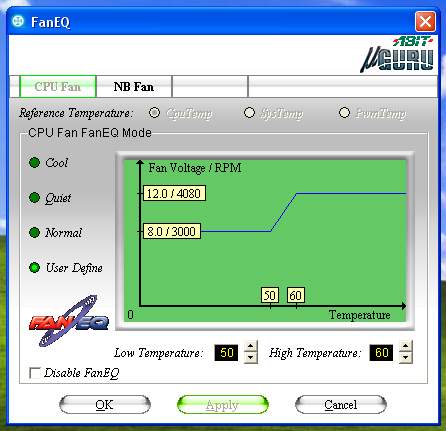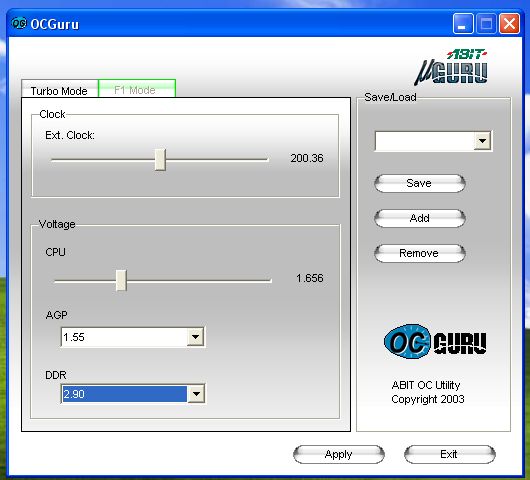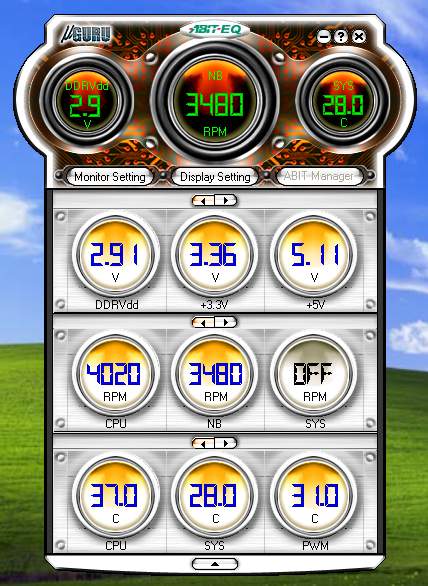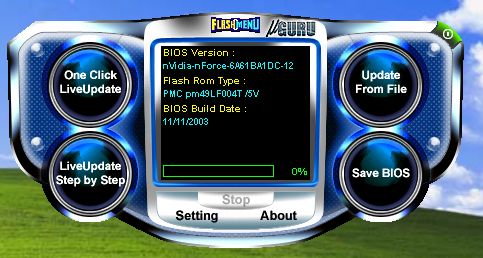µGuru
A little on µGuru before we come to a conclusion. For me, the combination of hardware and software to achieve ABIT's target of a system able to aid the tweaker and enthusiast, is a little wide of the mark in this early implementation. While I'm not against extravagantly themed Windows applications that present their own user interface, I am a fan of such applications offering a 'regular' interface that themes itself using the default Windows widget set. This avoids interface problems since such custom interfaces are rarely resizable, plus you avoid aesthetic issues where users simply do not like the default 'skin' that an application provides for its custom interface. Users can and will avoid using tools with poor interfaces, so a standard Windows interface to any application is a boon in all but the rarest of situations.I'm also a fan of consistency in user interfaces. ABIT's grouping of tools under the µGuru umbrella should ideally share a common user interface, even if it is different to a 'regular' Windows application interface. With that in mind, the differing interfaces for each of the µGuru applications isn't a plus point from my point of view, however easy they are to use.
Of course my opinion is entirely subjective and based entirely on my usage patterns and expectations from the applications I interact with on a daily basis. To this end, a set of programming interfaces to the underlying hardware, to allow 3rd party control of µGuru, would be nice. This would allow programmers to develop applications they are comfortable in using. As a programmer, I'm speaking entirely selfishly, but I'd like to see that happen, a µGuru SDK as it were.
The current incarnation of software tools for use with the system aren't all bad though. User interface issues aside, there appear to be very few barriers to actually using the software to get the most out of your system. The only issue I came across was the sporadic unwillingness for OCGuru, the overclocking part of the system, to work properly. Often it would pop up a message box saying the motherboard model was unsupported. Indeed, for a long time, I thought OCGuru simply wasn't setup to work with AN7 yet. Mistakenly clicking on it while trying to launch another application in the suite caused it to spring into life. Some teething troubles there I think, but OCGuru will work with AN7, just not 100% of the time in my experience.
FanEQ

FanEQ is the Windows extension to the FanEQ section in the AN7 BIOS, offering the same control over connected CPU and northbridge fans. You get limited profile support too, the software provides you with three defined fan profiles to choose from, along with the obvious user defined setting. It's simple to use and the most attractive and friendly of the µGuru applications in my opinion, since it doesn't deviate too far from accepted user interfaces.
OCGuru

OCGuru allows you to overclock your AN7 from Windows. There are two modes of operation, Turbo and F1. Turbo allows adjustment of front side bus speed only, a waste of UI space. The F1 option does the same but also extends your available adjustment options to voltages too. With the F1 option in plain sight and not disguised in any way, the Turbo options seems redundant. You get limited profile support too, I'd like to see hotkey support here, for applying a set of overclocked settings with a couple of keystrokes, in future versions. Again, not too unattractive but I'd like a Windows widget option for the UI.
AbitEQ

AbitEQ is a simple system monitor that shows realtime rotating system stats in the top section of that UI, a full range in the extended UI that slides out from the bottom, shown in the picture. There's also a graph based display that updates over time, to show you trends in the displayed outputs. It doesn't seem to log them however, so it's a simple snapshot only, depending on when you look at it. Updates I'd like to see would be logging to disk and transparency support, so you can keep it maximised if you wish, without it taking up its already sizable chunk of screen real estate. Motherboard Monitor is better (and supports AN7).
Flashmenu

Flashmenu is genuinely useful, offering the ability to flash the board BIOS automatically, from Windows. I used AWDFLASH to backup the current 11/11/03 BIOS manually, since there are no available updates for AN7, and used Flashmenu to flash it back to the board. It seemed to work OK, thumbs up for that. I wouldn't try and do it while overclocked however, it's a scary feeling to do it from Windows to begin with, after a lifetime of updates with boot disks.









